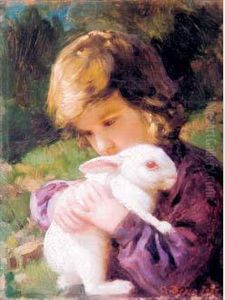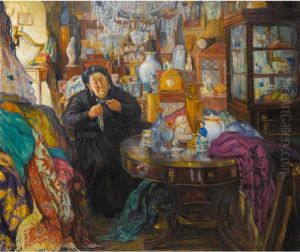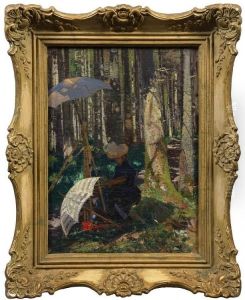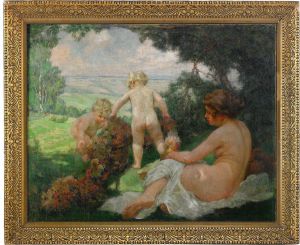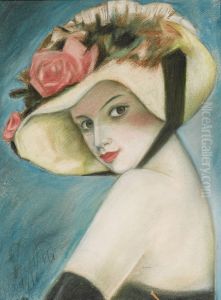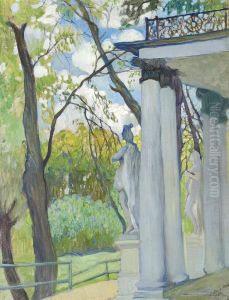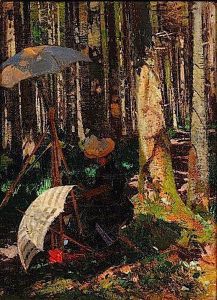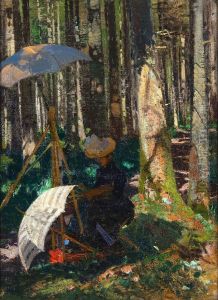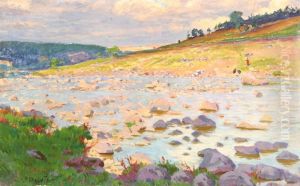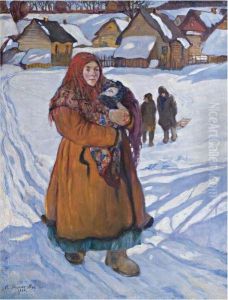Olga Della-Vos-Kardovskaya Paintings
Olga Della-Vos-Kardovskaya was a notable Russian painter and graphic artist, whose artistic journey spanned the late 19th and early 20th centuries, a period rich in cultural transformations and evolving art movements. Born on December 4, 1875, in the Russian Empire, Olga was part of an era that saw the transition from traditional to more experimental forms of art, including Realism, Impressionism, and the beginnings of Expressionism.
Olga's education in art began at the Moscow School of Painting, Sculpture and Architecture, where she was profoundly influenced by the Realist traditions. However, her style evolved significantly over time, incorporating elements of Impressionism and Symbolism, which were gaining popularity across Europe. Her marriage to Dmitry Kardovsky, a fellow artist and teacher, in 1905, further influenced her artistic direction. Dmitry was known for his work in illustration and teaching, and together, they became part of Russia's vibrant art community, contributing to the rich tapestry of Russian modernism.
Throughout her career, Olga Della-Vos-Kardovskaya was celebrated for her portraits and genre paintings, capturing the essence of her subjects with a delicate sensitivity and psychological depth. Her work often depicted the lives of women and children, imbued with a sense of intimacy and emotional resonance. She participated in numerous exhibitions, including those organized by the Union of Russian Artists and the World of Art, a famous Russian art movement and publication that played a crucial role in the development of Russian modernist aesthetics.
Despite the political turmoil and social upheavals that marked Russia in the early 20th century, including the Russian Revolution of 1917, Olga continued to work and evolve as an artist. Her later years were spent between Russia and Europe, particularly Italy, where she was influenced by the Renaissance masters, adding a classical dimension to her work.
Olga Della-Vos-Kardovskaya's legacy is that of a dedicated artist who navigated the complexities of her time with integrity and a deep commitment to her craft. She died on February 18, 1952, leaving behind a body of work that continues to be appreciated for its artistic merit and historical significance. Her paintings are held in several Russian museums and galleries, testament to her enduring influence on Russian art.
